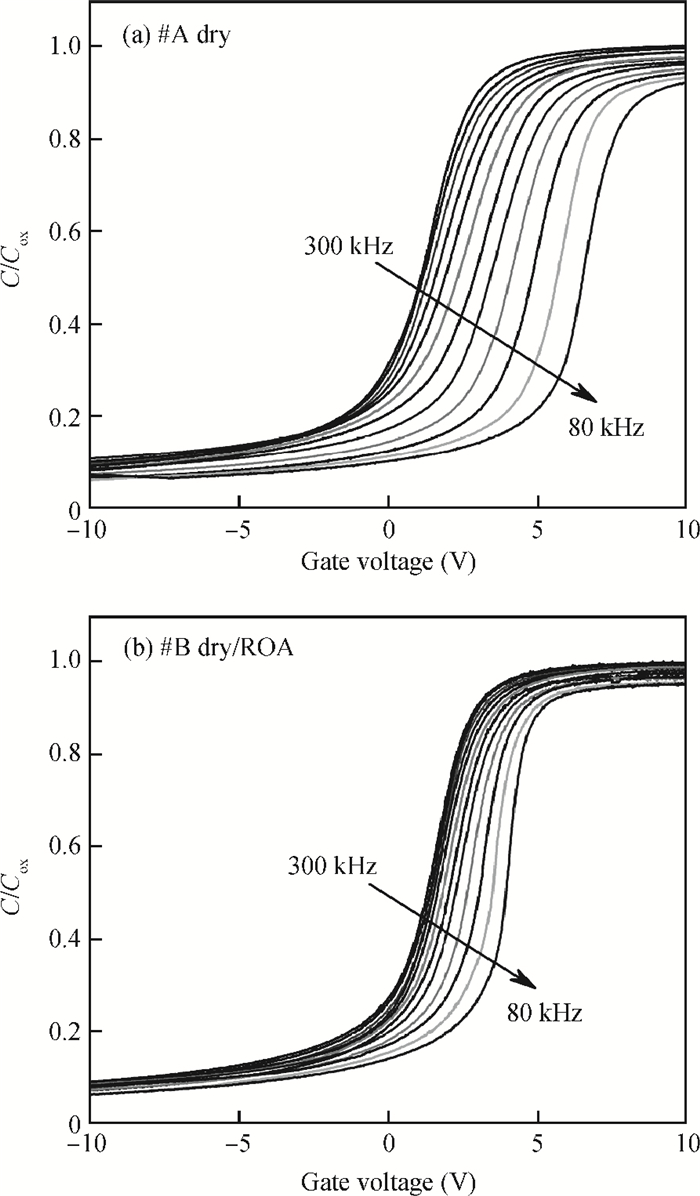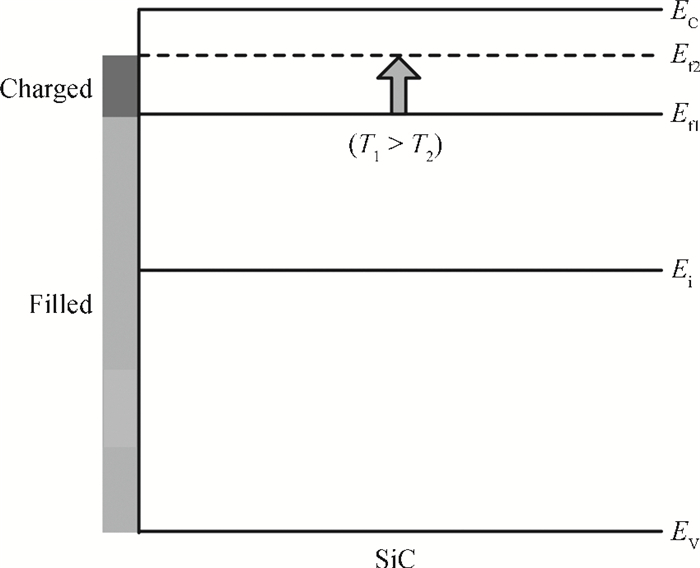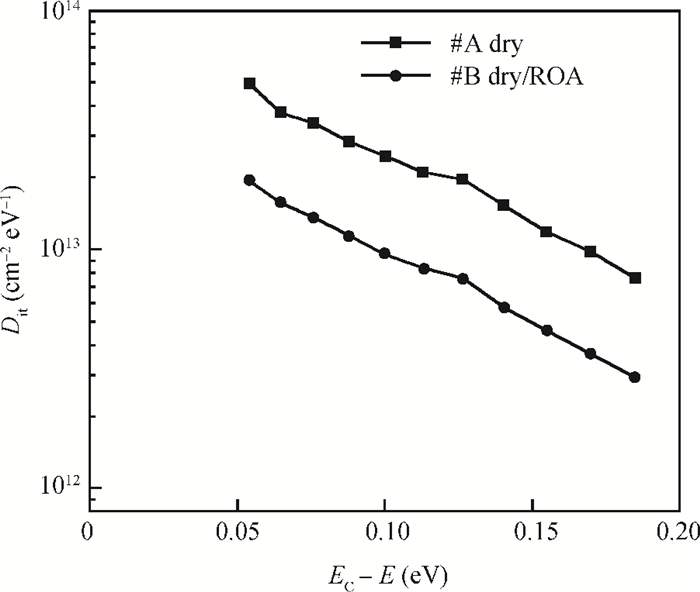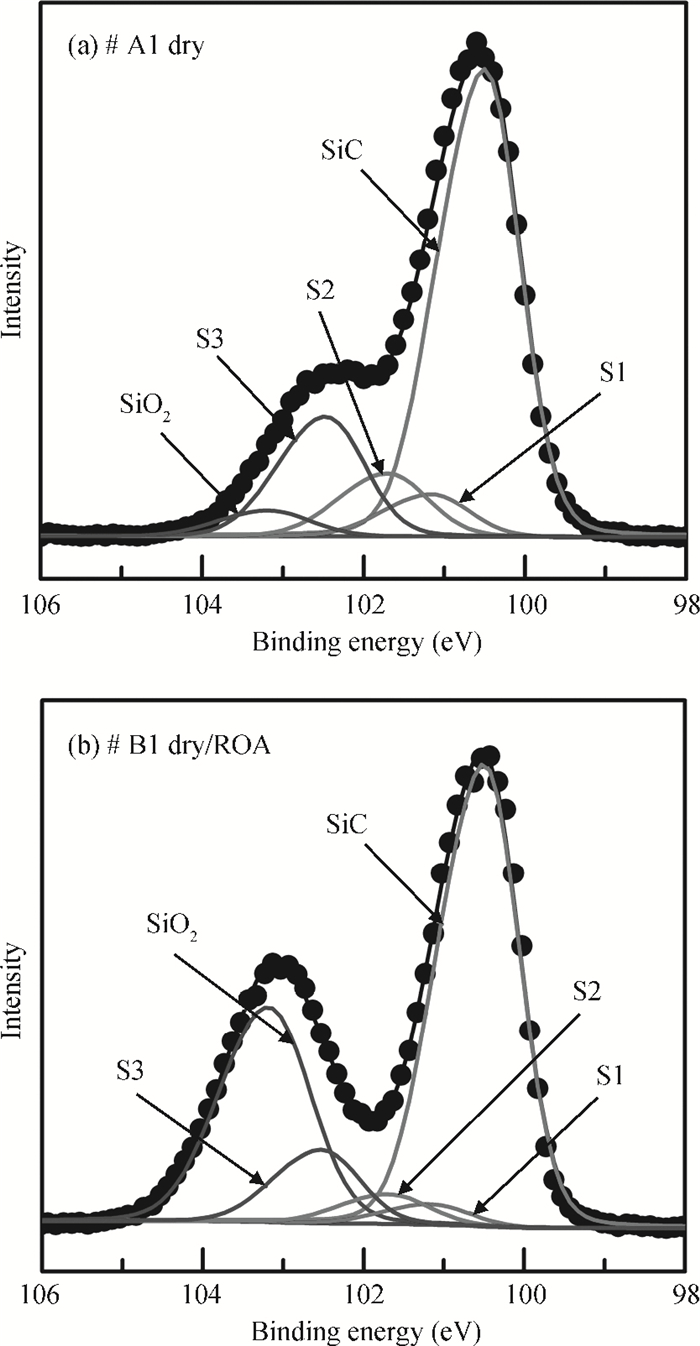| Citation: |
Qiaozhi Zhu, Dejun Wang. Effects of wet-ROA on shallow interface traps of n-type 4H-SiC MOS capacitors[J]. Journal of Semiconductors, 2014, 35(2): 024002. doi: 10.1088/1674-4926/35/2/024002
****
Q Z Zhu, D J Wang. Effects of wet-ROA on shallow interface traps of n-type 4H-SiC MOS capacitors[J]. J. Semicond., 2014, 35(2): 024002. doi: 10.1088/1674-4926/35/2/024002.
|
Effects of wet-ROA on shallow interface traps of n-type 4H-SiC MOS capacitors
DOI: 10.1088/1674-4926/35/2/024002
More Information
-
Abstract
The effects of wet re-oxidation annealing (wet-ROA) on the shallow interface traps of n-type 4H-SiC metal-oxide-semiconductor (MOS) capacitors were investigated by Gray-Brown method and angle-dependent X-ray photoelectron spectroscopy technique. The results present the energy distribution of the density of interface traps ($D_{\rm it})$ from 0 to 0.2 eV below SiC conduction band edge ($E_{\rm C})$ of the sample with wet-ROA for the first time, and indicate that wet-ROA could reduce the $D_{\rm it}$ in this energy range by more than 60%. The reduction in $D_{\rm it}$ is attributed to the reaction between the introduced oxygen and the SiO$_{x}$C$_{y}$ species, which results in C release and SiO$_{x}$C$_{y}$ transformation into higher oxidation states, thus reducing the SiO$_{x}$C$_{y}$ content and the SiO$_{x}$C$_{y}$ interface transition region thickness.-
Keywords:
- SiC,
- MOS,
- shallow interface traps,
- wet-ROA,
- interface transition region
-
References
[1] Palmour J W, Edmond J A, Kong H S, et al. 6H-silicon carbide devices and applications. Physica B, 1993, 185:461 doi: 10.1016/0921-4526(93)90278-E[2] Cooper J A Jr. Advances in SiC technology. Phys Status Solidi A, 1997, 162:305 doi: 10.1002/(ISSN)1521-396X[3] Yano H, Hirao T, Kimoto T, et al. A cause for highly improved channel mobility of 4H-SiC metal-oxide-semiconductor field-effect transistors on the (1120) face. Appl Phys Lett, 2001, 78(3):374 doi: 10.1063/1.1340861[4] Chen Z. Recent progress in SiC power electronic devices and fabrication process. Chinese Journal of Semiconductors, 2002, 23(7):673(in Chinese) http://adsabs.harvard.edu/abs/1997PSSBR.202..605Y[5] Schörner R, Friedrichs P, Peters D, et al. Significantly improved performance of MOSFET's on silicon carbide using the 15R-SiC polytype. IEEE Electron Device Lett, 1999, 20(5):241 doi: 10.1109/55.761027[6] Afanas'ev V V, Bassler M, Pensl G, et al. Intrinsic SiC/SiO2 interface states. Phys Status Solidi A, 1997, 162:321 doi: 10.1002/(ISSN)1521-396X[7] Das M K, Um B S, Cooper J A Jr. Anomalously high density of interface states near the conduction band in SiO2/4H-SiC MOS devices. Mater Sci Forum, 2000, 338-342:1069 doi: 10.4028/www.scientific.net/MSF.338-342[8] Saks N S, Mani S S, Agarwal A K. Interface trap profile near the band edges at the 4H-SiC/SiO2 interface. Appl Phys Lett, 2000, 76(16):2250 doi: 10.1063/1.126311[9] Pensl G, Beljakowa S, Frank T, et al. Alternative techniques to reduce interface traps in n-type 4H-SiC MOS capacitors. Phys Status Solidi B, 2008, 245(7):1378 doi: 10.1002/pssb.v245:7[10] Hornetz B, Michel H J, Halbritter J. Oxidation and 6H-SiC-SiO2 interface. J Vac Sci Technol A, 1995, 13(3):767 doi: 10.1116/1.579824[11] Zhu Q, Huang L, Li W, et al. Chemical structure study of SiO2/4H-SiC (0001) interface transition region by angle-dependent X-ray photoelectron spectroscopy. Appl Phys Lett, 2011, 99:082102 doi: 10.1063/1.3628322[12] Wang D, Zhao L, Zhu Q, et al. A transition region study of SiO2/4H-SiC interface by ADXPS. Journal of Semiconductors, 2008, 29(5):944(in Chinese) https://infoscience.epfl.ch/record/141739[13] Lipkin L A, Palmour J W. Improved oxidation procedures for reduced SiO2/SiC defects. J Electron Mater, 1996, 25(5):909 doi: 10.1007/BF02666657[14] Suzuki S, Harada S, Kosugi R, et al. Correlation between channel mobility and shallow interface traps in SiC metal-oxide-semiconductor field-effect transistors. J Appl Phys, 2002, 92(10):6230 doi: 10.1063/1.1513210[15] Gray P V, Brown D M. Density of SiO2-Si interface states. Appl Phys Lett, 1966, 8(2):31 doi: 10.1063/1.1754468[16] Taoka N, Mizubayashi W, Morita Y, et al. Effect of Ge metal-insulator-semiconductor interfacial layers on interface trap density near the conduction band edge. Jpn J Appl Phys, 2010, 49:04DA09 http://adsabs.harvard.edu/abs/1998SSEle..42..477C[17] Dhar S, Chen X D, Mooney P M, et al. Ultrashallow defect states at SiO2/4H-SiC interfaces. Appl Phys Lett, 2008, 92:102112 doi: 10.1063/1.2898502[18] Zhu X, Ahyi A C, Li M, et al. The effects of nitrogen plasma anneals on interface trap density and channel mobility for 4H-SiC MOS devices. Solid-State Electron, 2011, 57:76 doi: 10.1016/j.sse.2010.12.002[19] Zhu Q, Qin F, Li W, et al. Improvement of SiO2/4H-SiC interface properties by electron cyclotron resonance microwave nitrogen-hydrogen mixed plasma post-oxidation annealing. Appl Phys Lett, 2013, 103:062105 doi: 10.1063/1.4818141[20] Sze S M. Physics of semiconductor devices. New York: Wiley, 1991[21] Önneby C, Pantano C G. Silicon oxycarbide formation on SiC surfaces and at the SiC/SiO2 interface. J Vac Sci Technol A, 1997, 15(3):1597 doi: 10.1116/1.580951[22] Hill J M, Royce D G, Fadley C S, et al. Properties of oxidized silicon as determined by angular-dependent X-ray photoelectron spectroscopy. Chem Phys Lett, 1976, 44(2):225 doi: 10.1016/0009-2614(76)80496-4[23] Fulghum J E. Determination of overlayer thickness by angle-resolved XPS:a comparison of algorithms. Surf Interface Anal, 1993, 20:161 doi: 10.1002/(ISSN)1096-9918[24] Tanuma S, Powell C J, Penn D R. Calculations of electron inelastic mean free paths. Surf Interface Anal, 1991, 17:927 doi: 10.1002/(ISSN)1096-9918[25] Beccat P, Silva P D, Huiban Y, et al. Quantitative surface analysis by XPS:application to hydrotreating catalysts. Oil & Gas Sci Tech-Rev. IFP, 1999, 54(4):487 https://ogst.ifpenergiesnouvelles.fr/articles/ogst/pdf/1999/04/beccat_v54n4.pdf -
Proportional views






 DownLoad:
DownLoad:


















